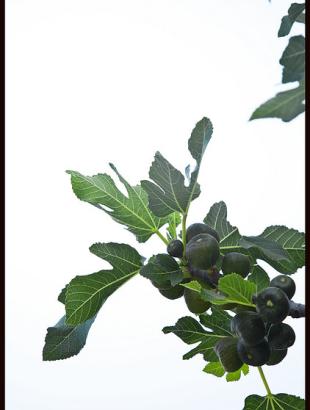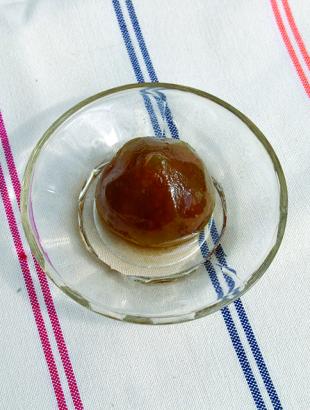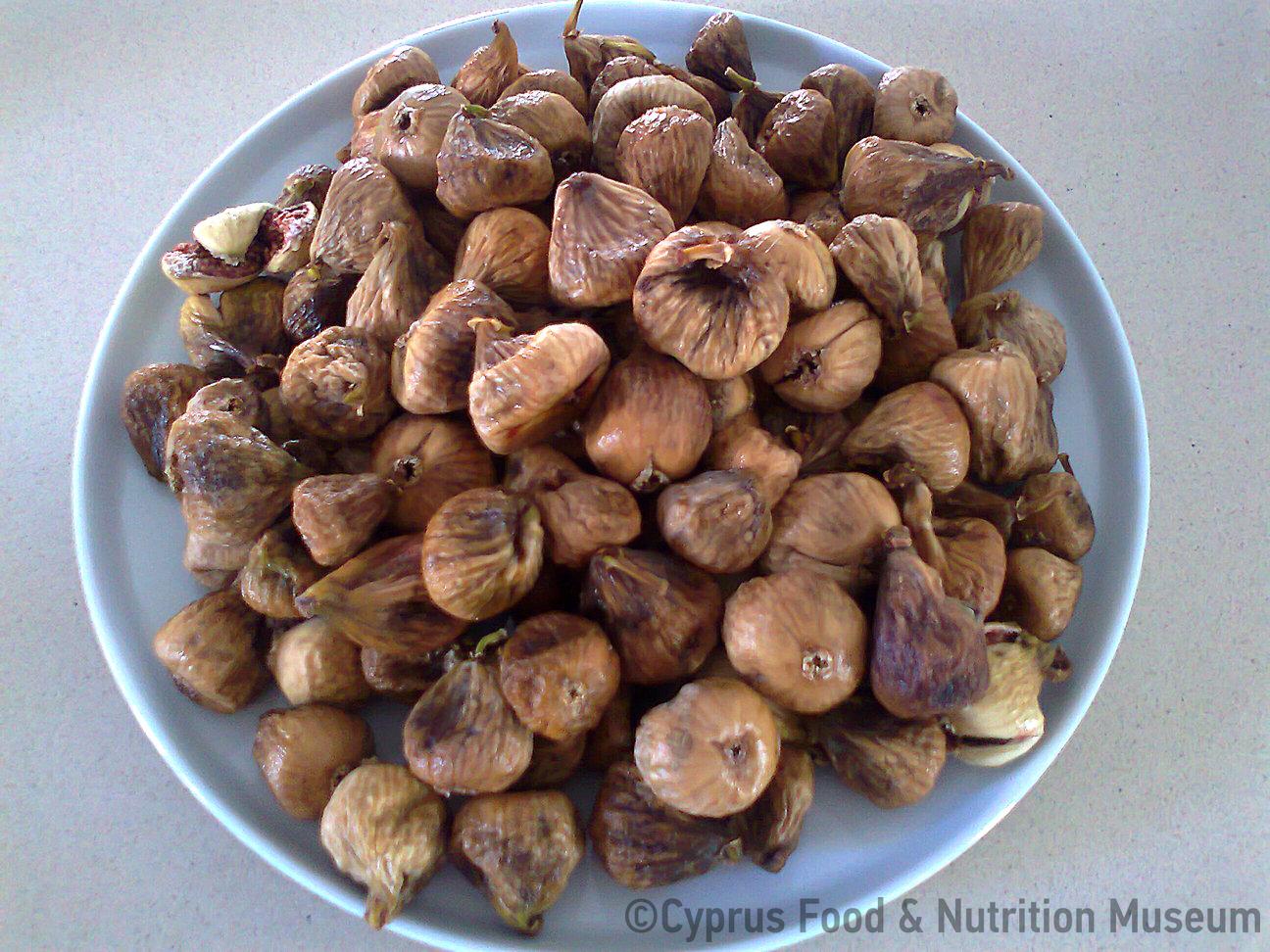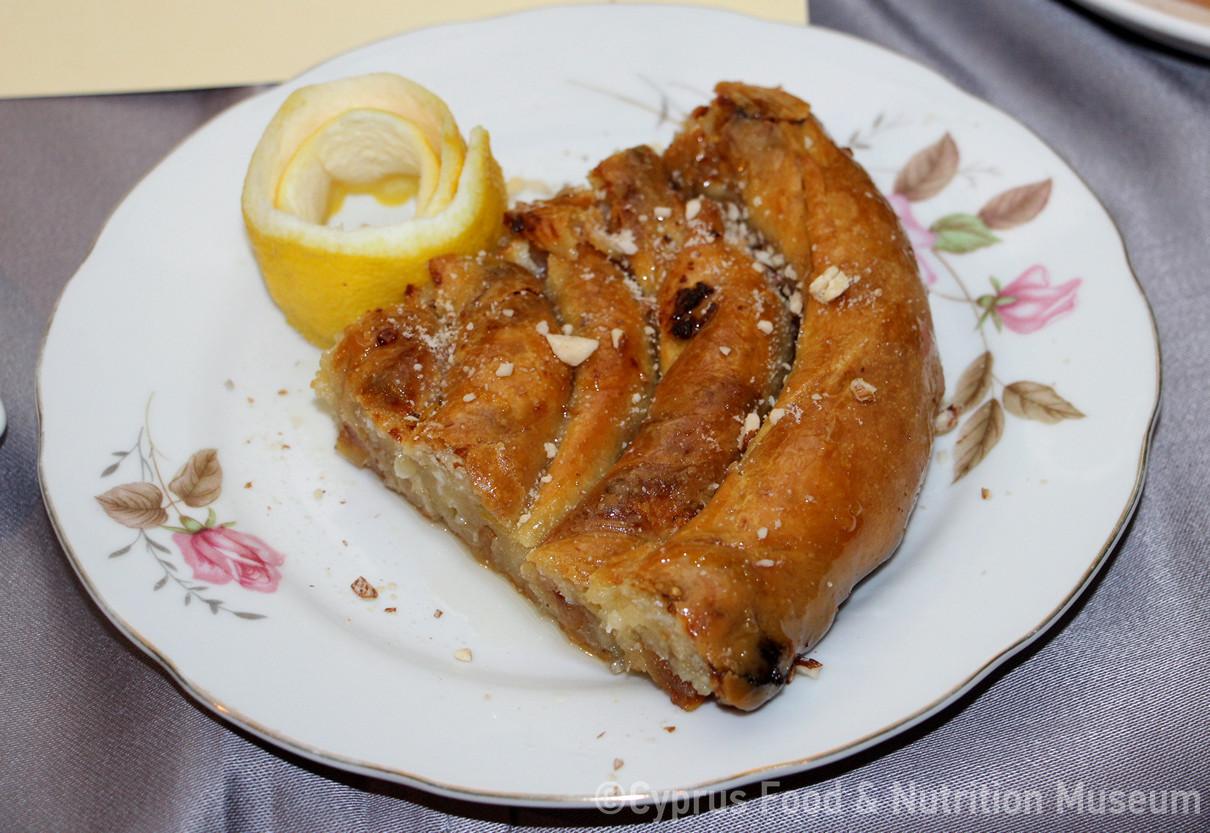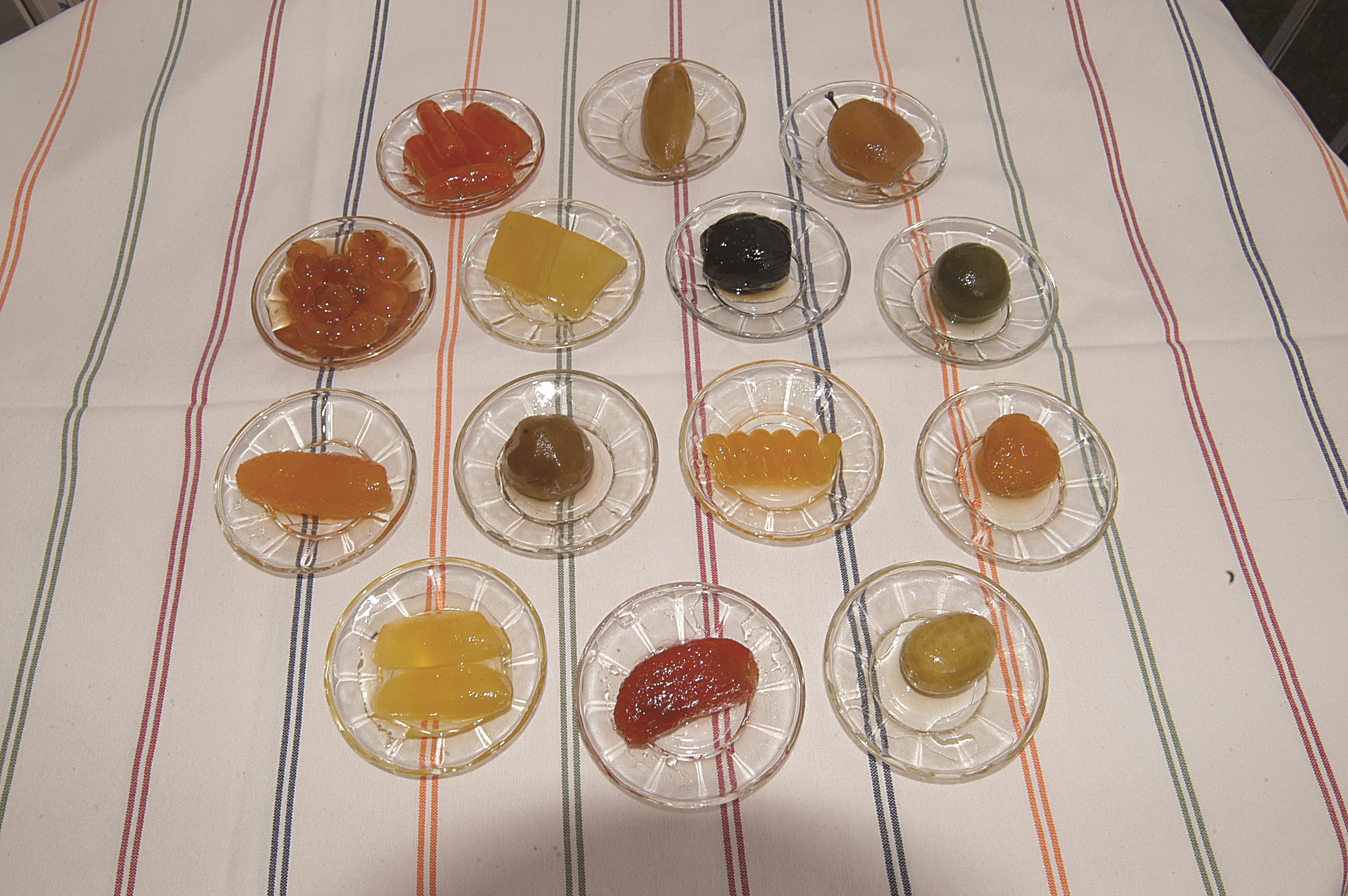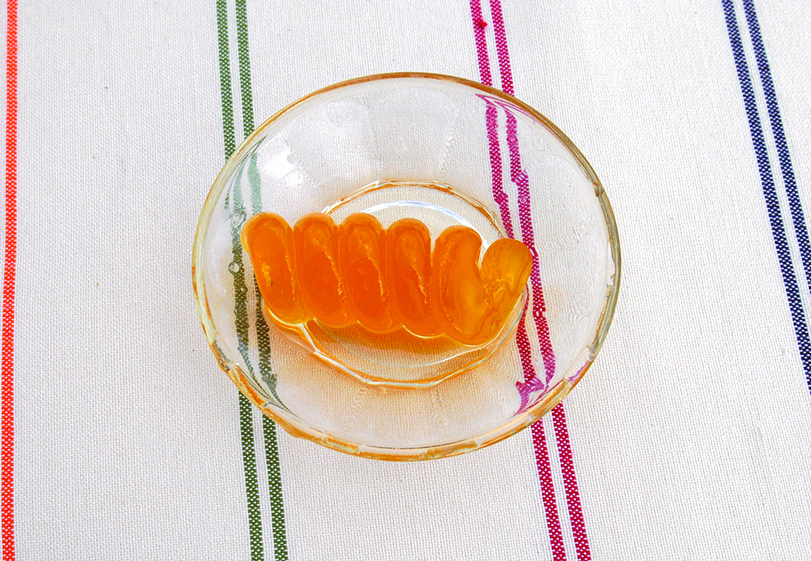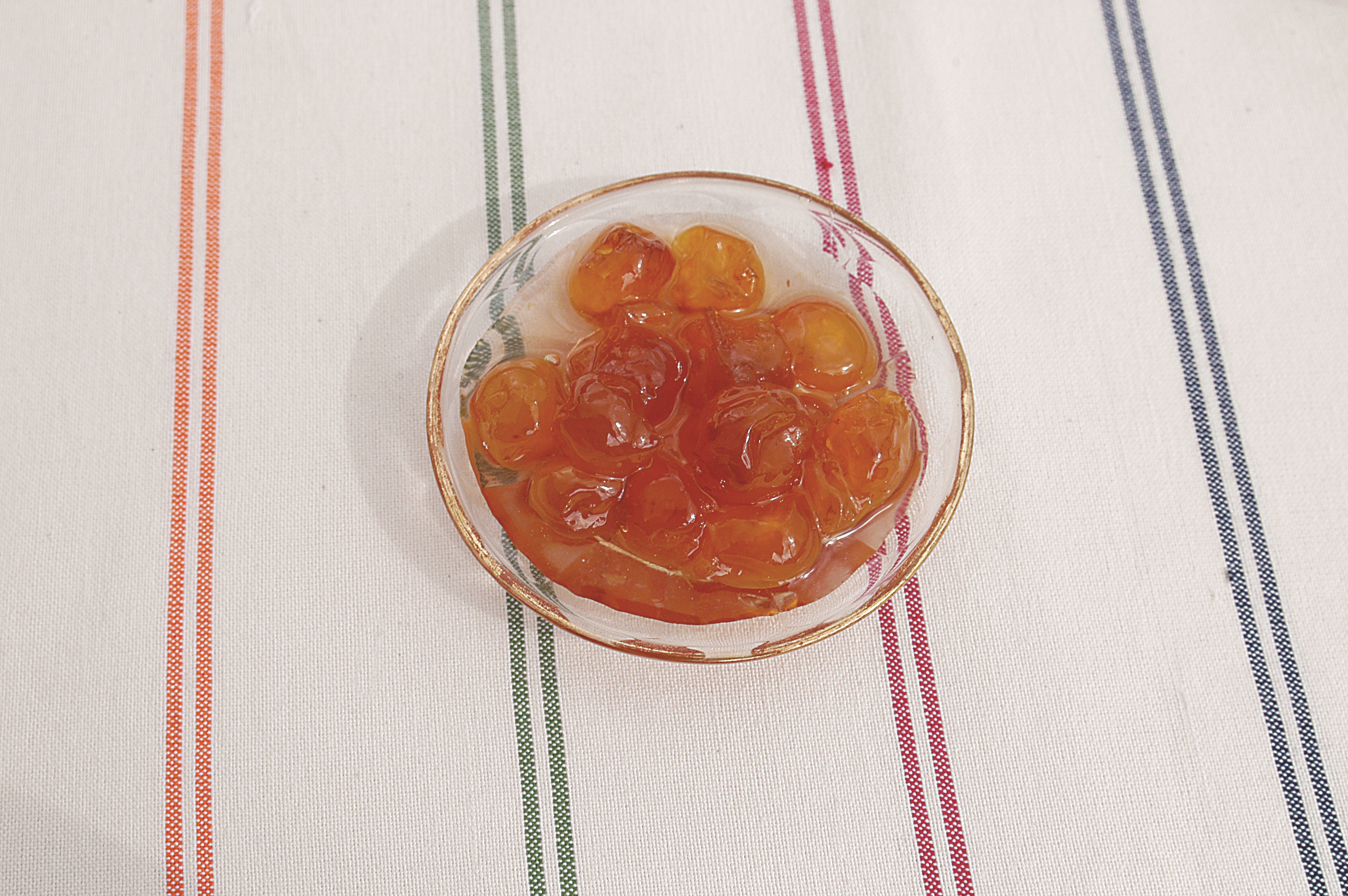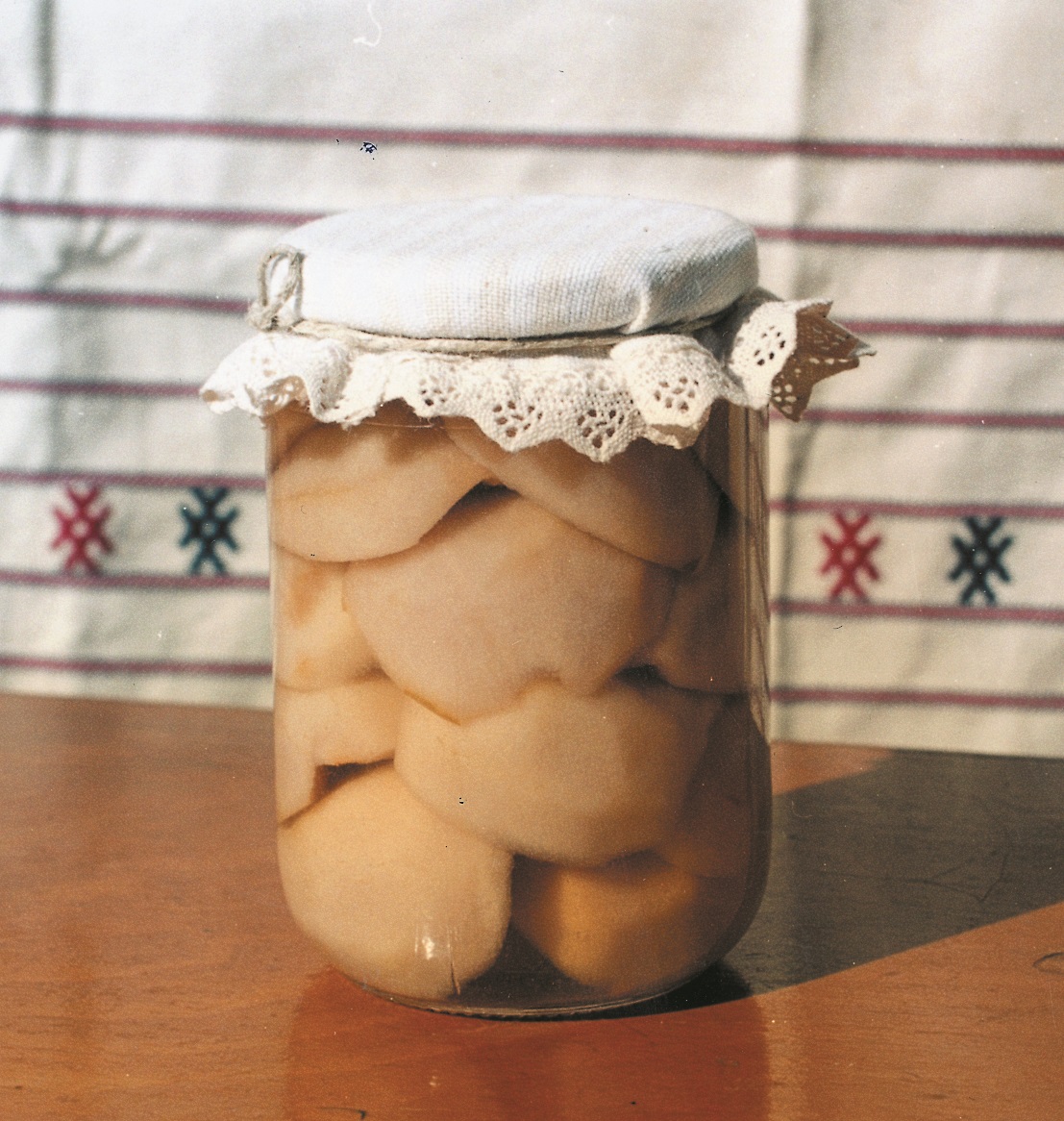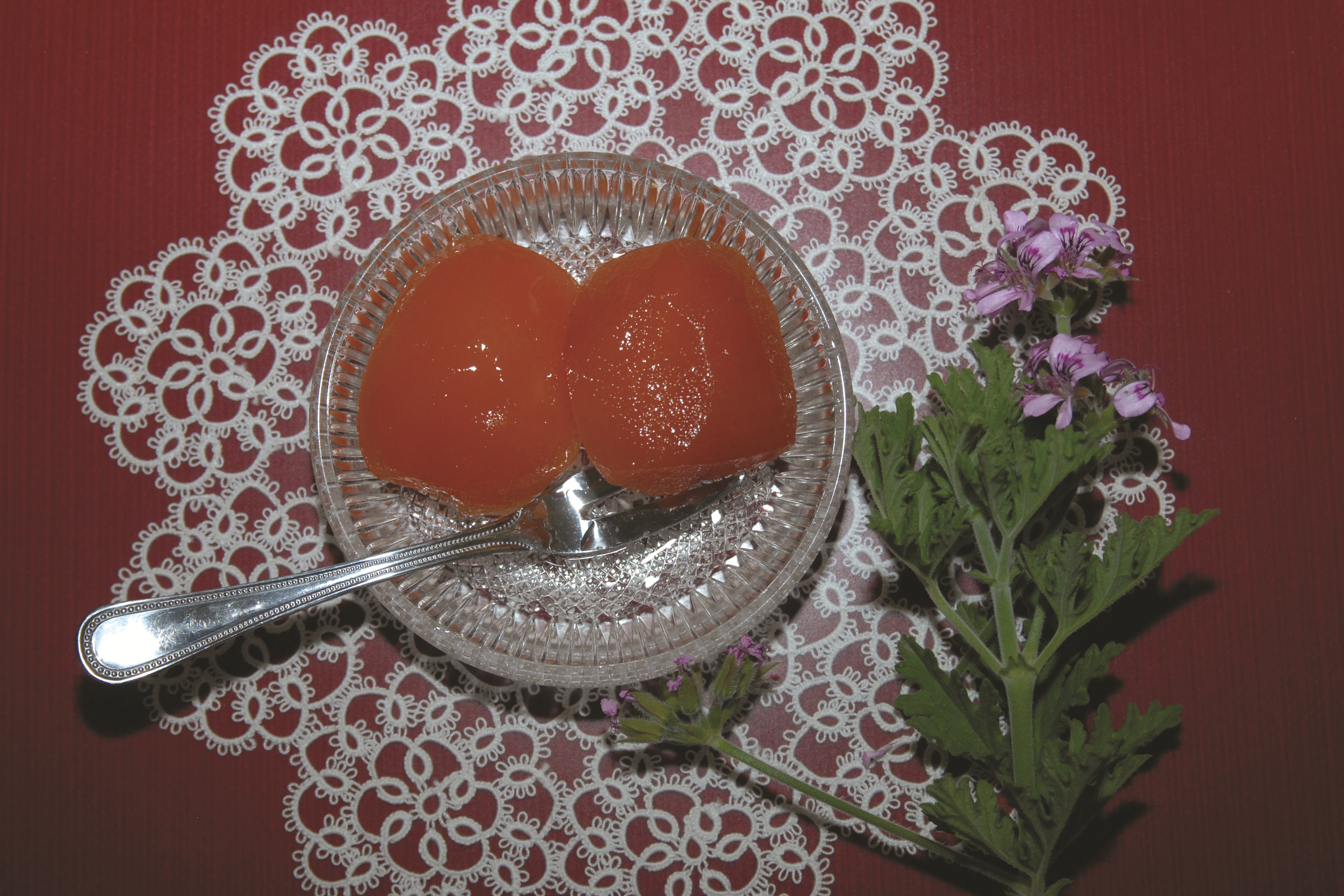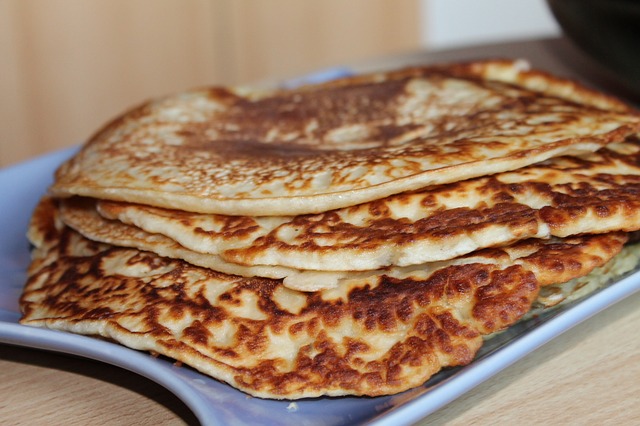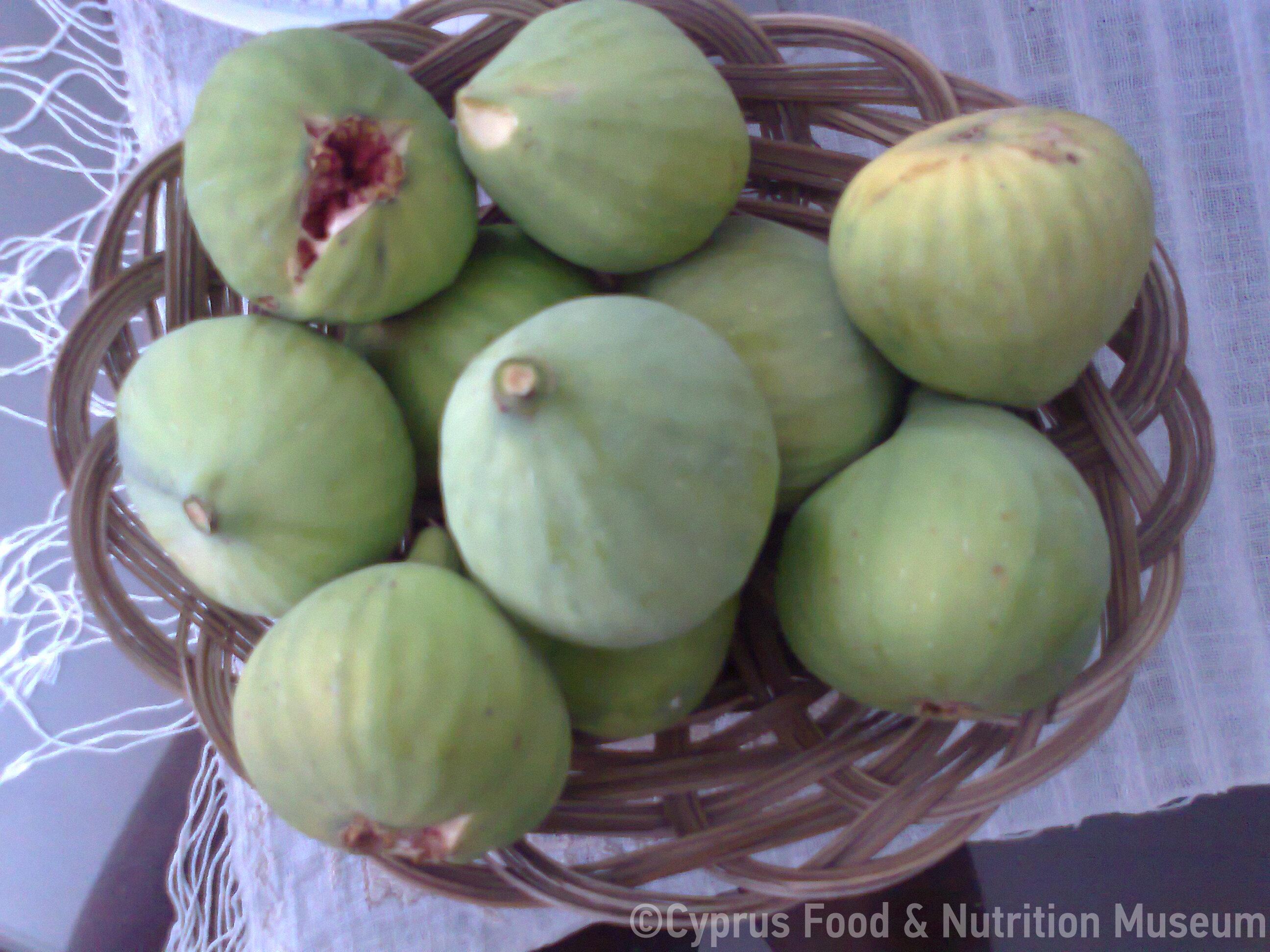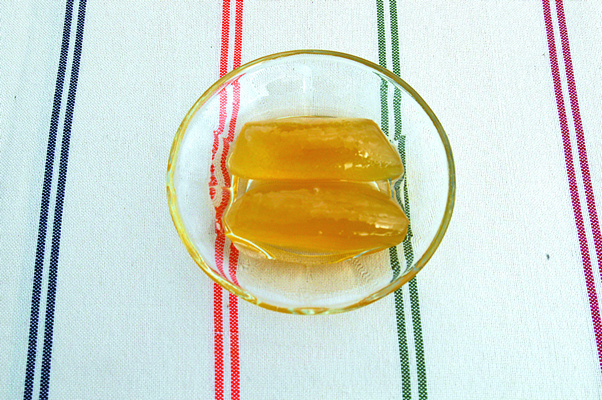Primarily, unripe figs are used for the preparation of this sweet, which in Cypriot they are called koutsaka. Thus, the spoon sweet is also called fig-koutsako.
Name - Recipe
Γλυκό του κουταλιού σύκο.
Version A
100 small round figs
3 kg of sugar
1 sachet of lime
rose geranium
4 lemons
Almonds
Version B
1 kg of half-ripe figs
1 ¼ kg of sugar
A bit of lime
Almonds, blanched and roasted
Version A
Peel the skin of the figs. In a basin, dissolve lime (one sachet) with water and place the figs Ito soak for 2 hours. Rinse them very well and place them in a pot. Add some rose geranium and boil them for a few minutes. Rinse them well and place in a pot with the juice of four lemons and cold water to cover them for about an hour until they are firm. Meanwhile, roast the almonds. Pierce each fig and insert one almond. Put the pot on the stove and add the sugar (3 kilos). Cook for 2 hours until the syrup thickens and the spoon sweet is ready. (Pepa Frixou, 61 years old, Pachna Limassol)
Version B
Peel the skin off the figs and place them in a basin with water. Place a cup of lime in a clean cloth, tie it up and place it in the water with the figs. Leave them for about 1 hour and then wash them well in clean water. Meanwhile, prepare the syrup in a pot that you will later use to add the figs.. Place the figs in hot water and remove them immediately placing them in a basin with cold water. Drain them, put and almond in each one and put them in the pot with the syrup. Bring them to a boil for a while and remove them from the heat to cool down. Once cool, boil them again until the syrup is ready. (Sotiroula Kyriacou, 56 years old, Dymes)
Boiling.
Boiling in syrup.
How do we know when the syrup is ready: Place some syrup in a spoon and let it drip away in the pot. When the syrup flows away easily, it means it is still watery and not ready. Keep on boiling for a few minutes and test again until the flow separates into drops. When a final drop remains hanging from the spoon, it means that the density is right and the syrup is ready. If not, that means that the syrup is not ready and needs a bit more boiling. Repeat the testing procedure again until the syrup has the right consistency.
If the syrup is properly thickened, then the spoon sweet can be preserved for a very long period of time in a cool, dry place without having to be kept in a refrigerator. (MANRE, 2009)
Additional information and bibliography
Extract from an interview with Ms. Pepa Frixou: Question: Where did you learn the recipe from? Answer: From my mother.
Question: Did you make any changes-modifications to the recipe (ingredients, ratio of ingredients, method of preparation, method of storage, method or means of baking)? Answer: Yes, I added the almonds whereas they were not part of the recipe before.
Ministry of Agriculture, Natural Resources and Environment, Department of Agriculture (2009). Traditional spoon sweets and jams, Press and Information Office, Nicosia.
Oral testimonies: Sotiroula Kyriakou, 56 years old, Dymes (see Kourri, P. and Lazarou, S. (eds.) (2007). Traditional recipes of the village of Kyperounda, unpublished data).
Pepa Frixou, 61 years old from Pachna, Limassol. Recorded by Zenovia Charalambous, October 2010. Edited by Stalo Lazarou.
Zenovia Charalambous, Stalo Lazarou
